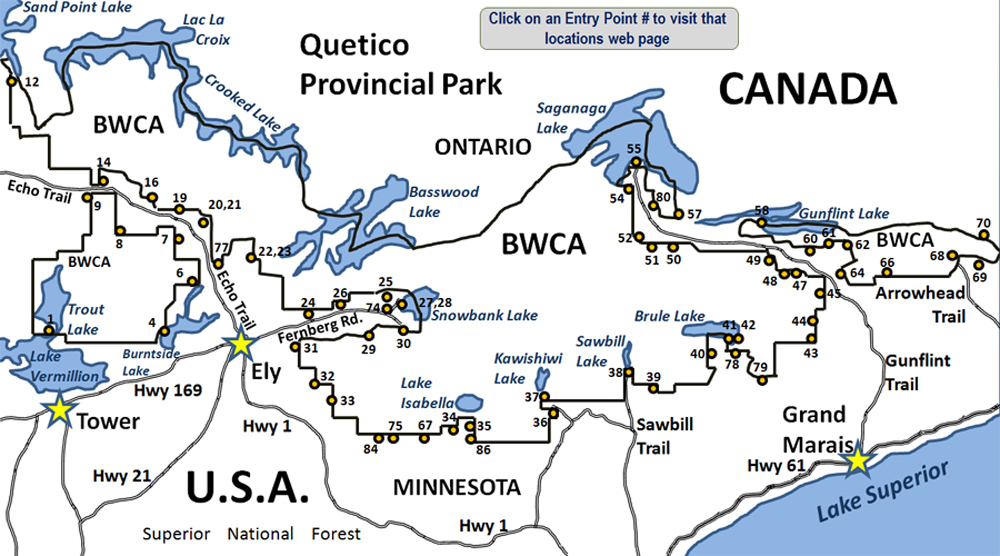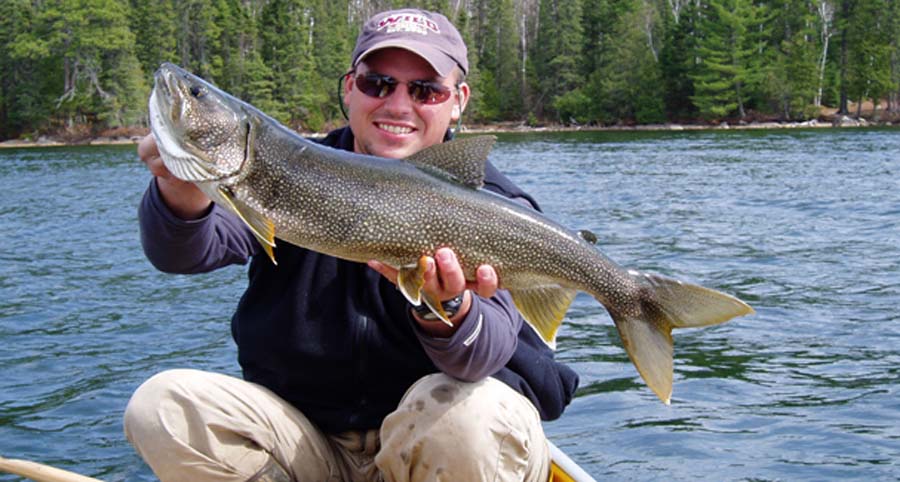 Public lands near Minnesota’s Boundary Waters withdrawn from federal mining leases
Public lands near Minnesota’s Boundary Waters withdrawn from federal mining leases

Adam Goldstein is the D.C. Bureau intern for States Newsroom. Goldstein is a graduate student at the University of Missouri School of Journalism, studying digital reporting. He is originally from San Francisco, and loves swimming, cooking, and the San Francisco 49ers.
WASHINGTON — After more than a year of assessment and debate, the U.S. Department of the Interior on Thursday announced the withdrawal of more than 225,000 acres of public lands near the Boundary Waters Canoe Area Wilderness in Minnesota from federal mine leasing programs.
Secretary of the Interior Deb Haaland signed Public Land Order 7917, which protects areas of the Superior National Forest from federal geothermal and mineral extraction leases for the next 20 years. The lands being withdrawn are predominantly in the northern portion of the Superior National Forest.
The release cited departmental concerns over the impacts of mining on ecosystem health, tribal rights, and the local recreation economy.
“The Department of the Interior takes seriously our obligations to steward public lands and waters on behalf of all Americans,” Haaland said in the release. “With an eye toward protecting this special place for future generations, I have made this decision using the best-available science and extensive public input.”
The 20-year suspension on extraction leases is the maximum that the Department of the Interior can apply. Only Congress can authorize a permanent withdrawal of federal lands, like those in the Superior National Forest, from these programs.
225,000 public comments
The decision follows a 2021 environmental assessment and withdrawal application from the U.S. Department of Agriculture’s Forest Service. More than 225,000 public comments were submitted on the application.
The Forest Service found that development of copper-nickel ore mining in the Duluth Complex, a large deposit of valuable minerals, would have adverse effects on ecological health, no matter what environmental mitigation methods are used.
The withdrawal application cited increased risk to Native American and low-income communities to acid mine drainage, and said unintended leakage from mines and their retention ponds could cause die-offs of animal life, and be detrimental to soil health.
The Forest Service report added that plans to mine the now-withdrawn public lands had been in place as early as 2006.
“I applaud Secretary Haaland’s decision to protect the long-term health of the Rainy River watershed, including the irreplaceable Boundary Waters Canoe Area Wilderness,” Agriculture Secretary Tom Vilsack said in a statement. “This landscape is an international resource renowned for its multitude of recreational opportunities and provides millions of visitors with unparalleled wilderness experiences.”

Boundary Waters Outfitters‘ guide with lake trout.
Republicans criticize decision
The U.S. House Natural Resources Committee decried the new decision on the committee’s Twitter feed. The chairman is Arkansas Republican Bruce Westerman.
“As Democrats shut down U.S. mines, China is laughing straight to the bank,” the tweet said. “We won’t stop fighting to access our resources and give jobs to American workers instead of supporting China’s appalling child and slave labor practices.”
Rep. Pete Stauber, a Republican whose Minnesota district includes the Boundary Waters, also denounced the decision in a Thursday statement, saying that the withdrawal of these public lands amounted to “a direct attack on our way of life.”
“We cannot have a future of renewable energy without minerals, period — not to mention their necessity to our defense systems, satellites, cellphones and virtually every other advanced technology,” Stauber said in the statement.
In contrast, Rep. Betty McCollum, a Minnesota Democrat, celebrated the decision
“I applaud Sec. Haaland for this action, which is an enormous step in safeguarding the Boundary Waters,” McCollum said in a statement. “Unfortunately, it can be reversed by another administration, which is why I am committed to reintroducing the Boundary Waters Wilderness Protection and Pollution Prevention Act in the 118th Congress to continue working to protect this national treasure in perpetuity.”
More than 166,000 visitors from around the world every year are drawn to the 1.1-million-acre Boundary Waters, according to USDA. It is the only lake-land wilderness in the National Wilderness Preservation System.
NOTE: The public lands contribute up to $17.4 million annually to the more than $540 million recreation and tourism economies in Cook, Lake and St. Louis counties, according to the Thursday release.







